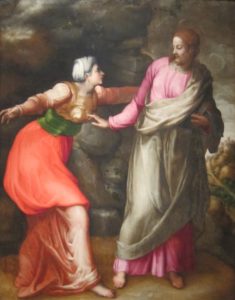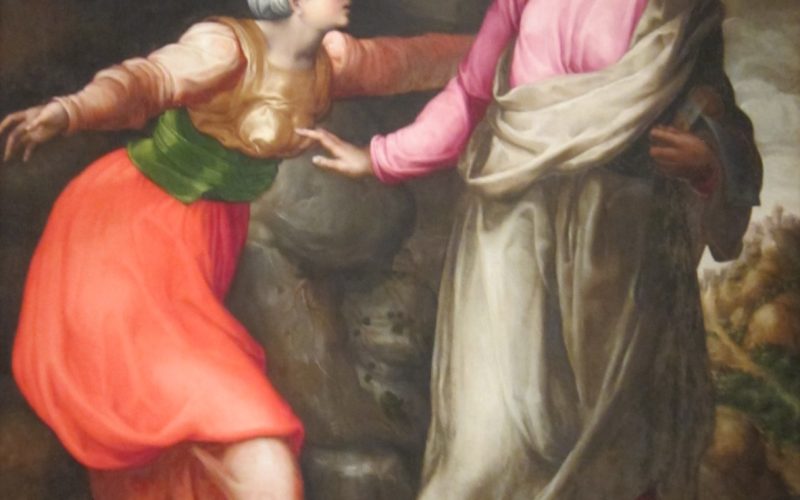Response to Prof. Bauckham’s critique of The Lost Gospel
Assessing The Lost Gospel, part 2.

Prof. Richard Bauckham from St. Andrews University has been posting scholarly reviews (two parts) of the book I wrote with Prof. Barrie Wilson: The Lost Gospel: Decoding the Ancient Text that Reveals Jesus’ Marriage to Mary the Magdalene.
So far, I’ve responded to his part 1. Here I’ll respond to part 2. To review, Prof. Bauckham agrees with our understanding of Joseph and Aseneth as a Christian manuscript i.e., he agrees that the document we call a “Lost Gospel” is, indeed, a Christian, not a Jewish writing. In other words, Prof. Bauckham has parted ways with those who refuse to admit that this is a Christian text, because they are afraid of the implications of this interpretation. Basically, Prof. Bauckham believes that he can have his cake and eat it too i.e., admit that it is a Christian document but, then, conclude that it doesn’t mean anything. By the way, by calling it a “Christian document” Prof. Bauckham joins a long list of scholars who reached a similar conclusion, including the scholar-priest Pierre Batiffol (1889), E.W. Brooks (1918), Rivka Nir (2012) and Ross Shepard Kraemer – arguably the top academic on the subject today (1998 and 2006).
In his “critique” of our book, Prof. Bauckham also agrees that the “Joseph” character in our manuscript is – typologically speaking – a stand-in for Jesus: “The Syriac Fathers, who read the Old Testament in pervasively typological terms, took Joseph to be a type of Christ”. So far so good. We are in wild agreement with each other. But now Prof. Bauckham turns to the “Aseneth” character in our manuscript, and argues against our reading that she’s a stand-in for Mary the Magdalene. Let’s go step by step and see if his rejection of this point makes sense.
(1) Aseneth is a type of the Church
In our book, we state that Aseneth is a “type of the Church”. Prof. Bauckham agrees with this. He calls it “uncontroversial”.
(2) Mary Magdalene is a type of the Church
Again, Prof. Bauckham agrees, stating that writers such as Ephrem (4th century) stated that Mary the Magdalene “was like the Church because she brought the good news of Jesus’ resurrection.” Again, so far so good. We’re in wild agreement. In the logic classes I once taught, if A = B and C = B, then A = C. In other words, Mary the Magdalene is a stand-in – typologically speaking – for Aseneth. But here is where Prof. Bauckham has a problem: he states that “Other women of the old testament, such as, Eve, Rachel, The Queen of Sheba and Esther were also treated as types of the church, but it does not follow that they therefore represent Mary Magdalene.” Well, it actually does. I refer Prof. Bauckham to the little chart above, with the A’s and the B’s and the C’s.
Put differently, if an “Old Testament” character is seen by a community as typologically representing the Church and if Mary the Magdalene is seen by the same community as also typologically representing the Church, then the biblical character in question could very well be a stand-in for Mary the Magdalene. So Queen Esther, for example, could be a Mary the Magdalene avatar. It doesn’t mean that she is, it just means that she’s available to an author that’s trying to encode a text concerning Mary the Magdalene.
So how do we know when a biblical character is a stand-in for Mary the Magdalene? We have to look at the text. Is she interacting with someone who is a typological stand-in for Jesus? In the case of our manuscript, she is. Not only that: in our story, her Jesus-like husband makes the sign of the cross in blood on a honeycomb and feeds it to her in a communion-like ceremony. Sure sounds Christian, doesn’t it? More than this, if Prof. Bauckham knows of any text where Eve, Rachel, The Queen of Sheba or Esther are called “The Daughter of God” or the “Bride of God” as Aseneth is called in our text, I ask that he contact me right away because he may have an encoded Gospel on his hands.
Finally, Prof. Bauckham argues firefox for Mac that when Ephrem writes that Aseneth “had many children by the Crucified” he was talking metaphorically of Christian believers “born” to Jesus and his bride the Church. That’s all very nice, but in our manuscript Joseph – a.k.a Jesus – has “intercourse” with Aseneth. The Church? I don’t think so. I think here, clearly, an all-too-human Jesus is having real sex with a human being – not an institution. Accepting Prof. Bauckham’s “metaphor” conjures up images that I dare not describe.
In conclusion, at the end of the day there isn’t very much separating Prof. Wilson’s and my interpretation of Joseph and Aseneth from Prof. Bauckham’s. He accepts that the text is Christian, he accepts that Aseneth is a stand-in for the Church, he accepts that Mary the Magdalene is a stand-in for the Church, he accepts that there is a marriage ceremony and that children are born as a result of their “intercourse”. Our only difference seems to be on our interpretation of the latter activity.
See also: http://www.huffingtonpost.com/simcha-jacobovici/jesus-marriage-to-mary-th_b_6225826.html

